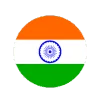Did you know that the global 3D animation market is projected to reach a staggering $43.7 billion by 2028? That’s a lot of polygons and pixels! With the increasing demand for immersive entertainment experiences, the art of 3D character modeling has become a crucial component of this booming industry. Creating compelling and visually stunning 3D characters is no easy feat. It requires a combination of artistic skills, technical knowledge, and an unwavering commitment to following best practices and incorporating useful tips throughout the process.
In this comprehensive guide, we’ll delve into the intricate world of 3D character modeling, covering everything from concept art and character design to texture mapping, rigging, and animation with the best 3d animation company in India Buckle up, because this journey is about to get wild!
CONCEPT ART AND CHARACTER DESIGN
Importance of concept art and character design: Imagine trying to build a skyscraper without architectural plans – it’s a recipe for disaster (or, at the very least, a leaning tower of polygons). The same principle applies to 3D character design. Concept art and character design lay the foundation for your entire project, ensuring that your vision is clear and cohesive from the get-go.
Creating sketches and illustrations: The first step in bringing your character to life is to immortalize them on paper (or, in this digital age, your trusty drawing tablet). Sketch out their personality, proportions, and overall aesthetic. Think of it as creating a dating profile for your character – you want them to be attractive enough to catch the eye of potential suitors (in this case, your audience).

ANATOMY AND PROPORTIONS
Understanding human (or creature) anatomy: Let’s face it, studying anatomy can feel about as exciting as watching paint dry. But trust us, it’s a crucial step in creating realistic and believable 3D characters. After all, you don’t want your 3d character to look like they’ve been hit by a truck full of malformed polygons, do you?
Studying muscle structure, bone placements, and proportions: Dive deep into the world of muscles, bones, and proportions. Study reference materials like anatomy books or online resources to gain a thorough understanding of how the body functions and moves. Pay close attention to details like muscle structure and bone placements – these small nuances can make a world of difference in the final product.
REFERENCE MATERIALS
Gathering reference materials (photographs, videos, real-life objects): In the world of 3D character creation, reference materials are your best friends (aside from that trusty stylus, of course). Gather as many high-quality photographs, videos, and real-life objects as possible to visually guide your project.
Improving accuracy and detail in textures, clothing, and accessories: Reference materials are invaluable when it comes to nailing those intricate details that truly bring your character to life. From textures and clothing to accessories and props, having accurate references will ensure that your final product is a masterpiece of realism (or stylized awesomeness if that’s your jam).

BASE MESH AND 3D MODELING
Starting with a base mesh or primitive shape: Before you dive into the intricate world of 3D modeling, it’s essential to establish a solid foundation. Start with a base mesh or a simple primitive shape, like a cube or sphere. Think of it as the skeleton upon which you’ll build the muscular, polygonal masterpiece that is your character.
Establishing overall proportions and basic form: Using your base mesh or primitive shape, begin to establish the overall proportions and basic form of your character. This initial step ensures that your character’s proportions remain consistent and cohesive throughout the modeling process.
SCULPTING AND RETOPOLOGY
Utilizing sculpting tools for organic shaping and refinement: Once you’ve established the basic form of your character, it’s time to get your hands (digitally) dirty with sculpting tools. These powerful features allow you to shape and refine your character’s form in an organic, intuitive manner, much like a sculptor working with clay.
Retopology techniques for optimizing mesh topology: As you sculpt and refine your character, it’s essential to keep an eye on their mesh topology. Retopology techniques enable you to optimize the mesh, ensuring that it’s clean, organized, and efficient for rendering and animation purposes.
TOPOLOGY
Importance of good topology: Topology is the backbone of your character’s mesh, and ensuring that it’s well-structured is crucial for creating smooth deformations and avoiding those pesky artifacts during animation.
Creating clean and organized mesh topology: Think of your character’s topology as a digital version of a well-organized closet – everything has its place, and nothing is out of order. By creating a clean and organized mesh topology, you’ll lay the foundation for a seamless animation experience.

TEXTURE MAPPING AND SHADERS
Applying detailed textures using UV unwrapping: Textures are the digital makeup that brings your character to life, adding depth, detail, and realism to their appearance. UV unwrapping is the process of mapping those intricate textures onto your character’s mesh, ensuring that every nook and cranny is covered in glorious detail.
Experimenting with shaders and material settings: Shaders and material settings are the secret sauce that takes your character from “meh” to “wow!” Play around with different settings to achieve realistic skin tones, shiny hair, and fabrics that drape and move like a dream.
RIGGING AND ANIMATION
Creating a skeletal structure and control system: Once you’ve crafted the perfect 3D character modeling it’s time to bring it to life through animation. 3D Rigging services involve creating a skeletal structure and control system that allows you to manipulate your character’s movements with precision and ease.
Following best practices for rigging (joint placement, weight painting): Just like with any art form, there are best practices to follow when it comes to rigging. Proper joint placement and weight painting techniques will ensure that your character’s movements look natural and fluid, rather than robotic and jerky.
ITERATION AND REFINEMENT
Critically evaluating and refining the character: Creating a compelling 3D character is an iterative process, and it’s essential to be willing to step back and critically evaluate your work. Don’t be afraid to identify areas that need improvement or refinement – it’s all part of the journey towards greatness.
Seeking feedback and making necessary adjustments: Sometimes, it takes a fresh pair of eyes to spot areas for improvement. Don’t be afraid to seek feedback from fellow artists, colleagues, or even trusted friends and family members. Their input can be invaluable in helping you refine and polish your character to perfection.
CONSISTENT STYLE
Maintaining visual cohesion across multiple characters: If you’re working on a project that involves multiple characters, it’s crucial to maintain visual cohesion across all of them. Think of it as a character ensemble – they need to look like they belong in the same world or universe.
Developing a unified style and aesthetic: Before diving into multiple character designs, take the time to establish a unified style and aesthetic. This will ensure that all your characters share a consistent look and feel, creating a seamless and immersive experience for your audience.
CONCLUSION
Recap the importance of following best practices and tips: Throughout this journey, we’ve explored the intricate world of 3D character creation, highlighting the importance of following best practices and incorporating useful tips at every step of the process.
Encourage continuous learning and practice: Remember, mastering the art of 3D character creation is a lifelong pursuit. Continuously seek out new knowledge, experiment with new techniques, and never stop practicing your craft. The more you immerse yourself in this world, the more your skills will grow, and the more stunning your creations will become.

Frequently Asked Question
Concept art and character design lay the foundation for the entire project, ensuring that your vision is clear and cohesive from the start. It helps to establish the character’s personality, proportions, and overall aesthetic before diving into the 3D modeling process.
High-quality photographs, videos, and real-life objects can serve as invaluable reference materials. They can help improve the accuracy and detail of textures, clothing, accessories, and other intricate elements of your character.
Having a clean and organized mesh topology is essential for creating smooth deformations and avoiding artifacts during animation. It ensures that the character’s mesh is efficient and well-structured for rendering and animation purposes.
Shaders and material settings are what bring your character to life, adding depth, detail, and realism to their appearance. Experimenting with different settings can help you achieve realistic skin tones, shiny hair, and fabrics that drape and move realistically.





 (03KEUPK4394K1ZN)
(03KEUPK4394K1ZN)